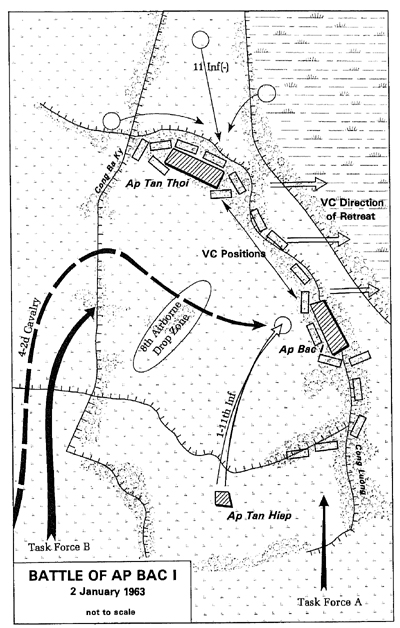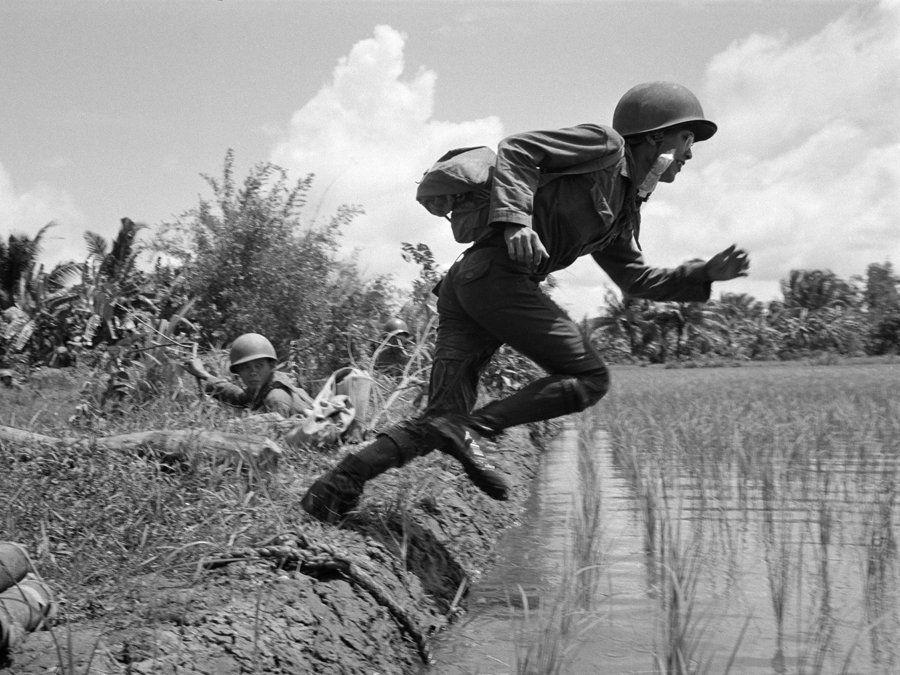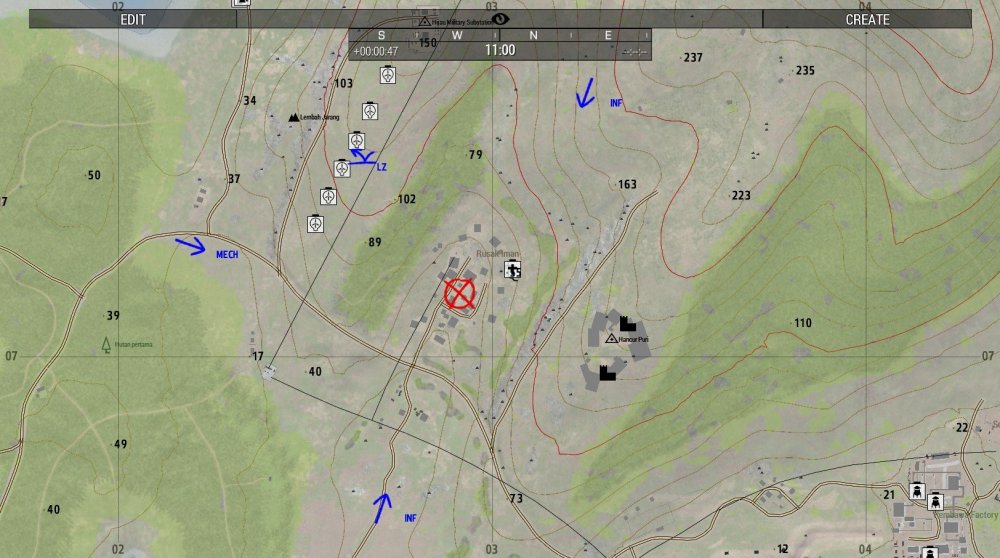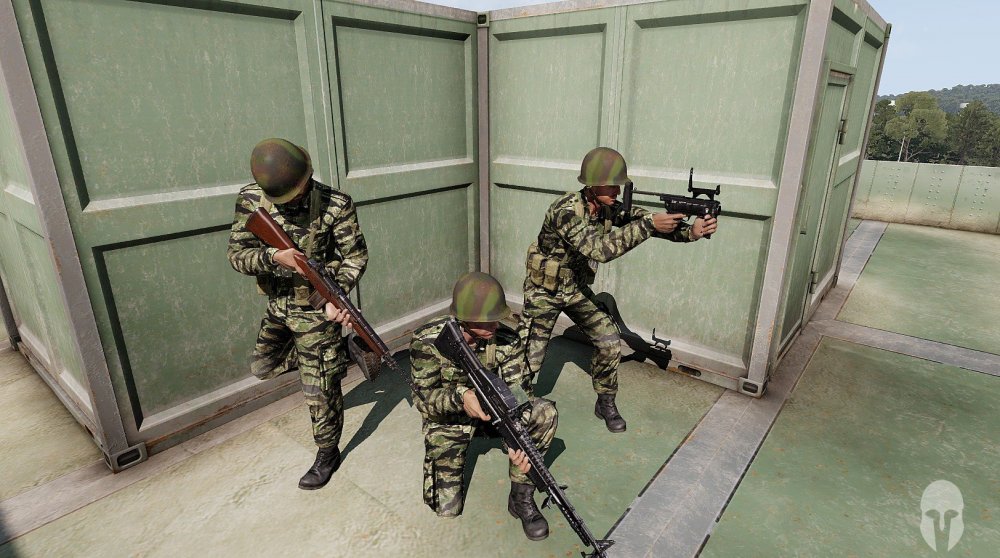
Military History - Ap Bac, Vietnam War - 1963
This is a bit of an odd one, as I've been incredibly busy this month and time is running out. So instead of spending a few days researching into something that happened in June I'm going to talk about something I already know about, which happened in January 1963. I'll be back to writing articles next month properly!
BACKGROUND :
During the early 1960s, a guerrilla war was raging in the countryside of South Vietnam. Communist members of the National Liberation Front were conducting lightning hit-and-run raids and ambushes against the forces of the Anti-Communist Republic of Vietnam (South Vietnam). In an effort to train and support the under-equipped and poorly motivated Army of the Republic of Vietnam, the United States had dispatched large numbers of American Special Forces soldiers to operate as Military Advisers. Officially, and publicly, the Advisers were not to engage in offensive military actions. JFK was quoted as saying Americans in Vietnam could 'shoot back to defend themselves' but not actively engage hostile forces. In reality, this was a lie.
American Advisers in the RVN were embedded with nearly all ARVN Companies, and sometimes at a Platoon level. Any Company which was deployed on a military operation had a large number of US advisers embedded within the formation, not only to teach and observe; but also to actively plan and fight engagements for the ARVN.
In nearly all previous engagements against the NLF, guerrillas would begin short ambushes with limited fire before withdrawing before ARVN forces could respond with much greater firepower. But in late 1962 and 1963, a new breed of NLF fighter was emerging. Highly motivated, well trained and equipped by Communist China, these troops began using more devious and intelligent plans of attack and defence against their ARVN counterparts. They started using transistor radios to communicate with each other throughout the country. And in December of 1962, one of these radios was located in the hamlet of Ap Bac. A plan was drawn up to seize it.
THE PLAN :

It was widely known that in all large scale operations against the NLF (or Viet Cong as the US had begun calling them), NLF fighters would always seek to evade attacking forces rather than enter a prolonged and drawn out conflict. As such, a plan was drawn up to play to these traits.
Ap Bac was a small hamlet, and military intelligence placed no more than 120 guerllias inside it's perimiter as a guard for the radio. The lead US Advisor, Lieutenant Colonel John Paul Vann drafted a plan which was accepted by the ARVN command. The plan was to assault Ap Bac from 3 sides, leaving a clear and inviting opening for the NLF to withdraw through - a seemingly safe route of extraction. This route would be watched by Forward Artillery Observers, and any NLF units caught in the open were to be destryoyed via Artillery Bombardment and Arial Attack.
Over 1500 ARVN soldiers were deployed in this operation, including a Mechanised Company, 2 Rifle Companies and an Airmobile Battalion. The ARVN however, lacked adequately trained helicopter pilots and the decision was made for American Helicopter crews to undertake the mission. Here, the first problem lay - only 10 CH-21 Shawnee Helicopters were available; but the Battalion needed 30 to transport all its personnel. The lift would have to take multiple flights.
Despite this, Vann's plan seemed sound. It was set to be an outright win for the Army of the Republic of Vietnam. With one major problem.
In 1963, corruption in President Ngô Đình Diệm's regime was inexplicably high. Politicians, Military Officials and even some Teachers were hugely corrupt. This corruption had spread to the individual fighting units under Vann's command. Officers in charge of their respective platoons were wary of engaging the Viet Cong. They wanted no authority to make decisions in combat. And what's worse - someone on the planning committee informed the NLF fighters in Ap Bac that an attack was coming.
The ARVN intel was massively wrong. While the radio set was indeed located in Ap Bac, the defenders numbered some 350 not 120 as thought. What's more, the NLF commanders had recently decided upon a new tactic - standing and fighting against the enemy.
ORBAT :
The ARVN force comprised some 1500 men. Records are from the ARVN are unreliable at best, so I shall do my best to note who, and what, was where.
1st Battalion, 11th Infantry Division, ARVN, Commanded by Huỳnh Văn Cao.
- 3 Rifle Companies, to be inserted via Helicopter
- 1 Mechanised Company
- 2 further National Guard Rifle Battallions
- US 93rd Transportation Company (Helicopter)
- Members of the 1st Special Forces Command 'Green Berets', US Army
The National Liberation Front defenders were commanded by Colonel Hai Hoang. It consisted of 350 guerrillas split across the following :
- 1st Company, 261st Bn
- 1st Company, 514th Bn
- 30 local force soldiers from Chau Thanh District
The Local NLF forces, thanks to being tipped off, had ample time to prepare their defensive position. The exact number of support weapons is unknown, but the NLF used at least 3 .30 calibre Machine Guns and 1 light mortar.
THE BATTLE :
At 07:00 on the 2nd January, 10 Shawnee Helicopters landed West of Ap Bac, dropping the first wave of the 3 Rifle Companies. The troops on the ground began digging in around the rice paddies to secure their LZ, awaiting the rest of the Rifle Companies to be flown in. This delay in insertion of the Airborne unit meant that the National Guard forces were forced to advance on Ap Bac without any support. The members of TF A advanced North towards the hamlet, alert yet confident. Unknown to the members of the Battalion, Viet Cong radio operators had recently captured American Radios and were monitoring their activities the entire time. The Battalion came within 30 meters of the Hamlet, and a Viet Cong unit ambushed them from carefully concealed spider holes and machine gun pits. The leading Company Commander was killed, and Task Force Commander was wounded in the initial ambush. Survivors retreated behind a rice paddy dike and hid there under intense fire. A Forward Observer in the National Guard Bn called for artillery support, but refused to monitor where the rounds landed. As such, the barrage did little to suppress NLF forces.
To the North of Ap Bac, a similar ambush caught the members of the 11th Infantry Regiment in a deadly cross-fire. For 5 hours, the Northern Flank was stoically held by NLF troops, with multiple machine guns and Light arms pinning the ARVN troops down. With another flight of the Airborne troops en route, Vann ordered his helicopters to drop them further away than the original landing zone. At this time in the war however, US Pilots and ground troops did not work well with each other. The pilots under Vann's command refused the order and approached the original landing zone. As the helicopters touched down, at least 1 MMG and multiple LMGs began firing at them, hitting and severely wounding many ARVN troops as they disembarked. The lone 60mm mortar began dropping rounds on the Landing Zone as well. One helicopter was damaged to the point where it could not lift off. The crew, trapped and desperate on the ground, begged for another helicopter to recover them. This helicopter, also damaged, lost power and was forced to be abandoned on the LZ. By 10:30, ARVN troops on the LZ were pinned down and refused to move. Sergeant Arnold Bowers, a Green Beret, dashed back and forth between his safe position and the helicopters, rescuing the crewmen.

After Bowers had treated the wounded aircrew, he grabbed a Radio and began to co-ordinate artillery and airstrikes. 2 A6-D Skyraiders arrived and bombed the village with Napalm and Conventional Munitions. With the gunfire dying down, many of the ARVN troops believed that the NLF forces had withdrawn and stood up to witness the retreat. These men were cut down by a renewed and withing fusillade of fire from concealed NLF positions. Vann radioed to the US adviser to the ARVN 2nd Armoured Cavalry, the Mechanised force standing by. Captain James B. Scanlon informed his counterpart, Captain Ly Tong Ba to move his M113s to support the pinned down and decimated ARVN Airborne forces. Ba refused to comply, citing his orders that he would not accept any orders given to him by Americans. After nearly half an hour arguing, Ba finally relented and ordered his troops forward. The deep rice paddies and wide dikes slowed the Mechanised cavalry advance, and it would take nearly two hours before they were close enough to support the Airborne troops. This was not the turning point the ARVN were hoping for however, as VC troops sprung from spider holes and threw a multitude of grenades at the M113s. While this did little damage to the APCs, it wounded many of the troops riding atop them, and demoralised the Vehicle Crews. The advance halted entirely. They had managed to get close enough to the Airborne troops to provide at least some adequate fire support.
Meanwhile, a squadron of armed Huey Gunships had been strafing NLF positions, firing flex guns and rockets at the suspected VC gun emplacements. One was caught in a burst of heavy calibre fire and was immobilised, forced to crash land in the LZ with the other downed choppers. Another Shawnee was sent back in to rescue the grounded aircrews, and this too was shot down. At 14:30, the demoralised and battered M113 company withdrew themselves from the fight, leaving the Airborne troops stranded. Vann persuaded ARVN commanders to call in Company of Paratroopers to support the infantry still on the ground. The DZ was slated to be to the West, behind the withdrawn M113s. As the flight of C123 Providers approached the Hamlet, carrying some 300 paratroopers, they drew fire from Small Arms inside the villages' perimeter. The pilots changed their approach, but this information did not make it's way back to the waiting infantry who jumped early. The paratroopers descended in front of NLF positions instead of behind friendly M113s. The paratroopers were being picked off as the drifted to the ground, some getting stuck in trees. Both American Advisers who jumped with the paratroopers were also wounded. Those that made it to the ground began small unit tactics, skirmishing with the VC defensive line in the trees without any major successes. As night fell, the gunfire slowed and the ARVN troops withdrew to regroup. Knowing that the morning would bring fresh offensives, Hoang ordered his NLF troops to withdraw from the Hamlet under the cover of darkness. The following morning, at 07:00, Vann and the ARVN forces advanced into the village of Ap Bac with no resistance.

AFTERMATH :
The Battle of Ap Bac was a horrendous failure for the ARVN. Vann was reported as saying "It was a miserable damn performance, just like it always is. These people won't listen. They [the ARVN] make the same mistake over and over again in the same way." It was the first time the NLF had stood up to fight against the ARVN in a prolonged battle. The ARVN deployed 1500 infantry, 10 CH-21 Shawnees, 13 M113 APCs & 5 UH-C Iroquois. Casualties were, frankly, atrocious, especially when compared to the NLF's 350 deployed personnel.
ARVN casualties were as follows:
- 83 KIA and over 100 Wounded
- American Advisers suffered 3 KIA and 8 Wounded
- 14/15 Helicopters used were damaged, with 5 shot down
The NLF casualties however, were minimal:
- 18 soldiers killed
- 39 wounded
Both South Vietnamese and American Government bodies hailed Ap Bac as a success. The North Vietnamese and NLF commanders used the example of Ap Bac to galvanise their warriors, and lessons learned here were used by Giap during the battle of the Ia Drang 2 years later.
PUTTING IT INTO PRACTICE :
If you want to try your hand at assaulting Ap Bac, then there's an option I've found.
Using Tembelan Island, there's a town in the North West which works pretty well for Ap Bac. With woodland on two sides and raised ground to the north, it presents a difficult location to assault. A Zeus could split players into 3 platoons, having either M113s or Hueys for the special Infantry section. 1/3 of the players can assault from the North, a 1/3 from the South and the others coming in from the West.
I recommend using the Chedaki insurgents, using AK and PKM armed troops with some dug-in DshK emplacements. Don't forget to include a mortar to shell the incoming forces! You should dig troops into the trees around the hamlet, and have them garrison the buildings to provide a difficult location to assault.
The players can restrict their loadout to an approximation of the ARVN. Tigerstripe camo, M1 helmets and M14s/M60s and the M203 handheld can be used to imitate the ARVN pretty well. For added difficulty don't take interpersonal radios.
I hope you enjoyed, and happy playing!
-
 1
1
-
 5
5









Recommended Comments
There are no comments to display.
Join the conversation
You can post now and register later. If you have an account, sign in now to post with your account.
Note: Your post will require moderator approval before it will be visible.